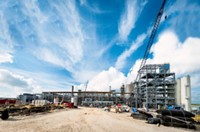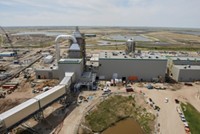Advertisement
Grab your lab coat. Let's get started
Welcome!
Welcome!
Create an account below to get 6 C&EN articles per month, receive newsletters and more - all free.
It seems this is your first time logging in online. Please enter the following information to continue.
As an ACS member you automatically get access to this site. All we need is few more details to create your reading experience.
Not you? Sign in with a different account.
Not you? Sign in with a different account.
ERROR 1
ERROR 1
ERROR 2
ERROR 2
ERROR 2
ERROR 2
ERROR 2
Password and Confirm password must match.
If you have an ACS member number, please enter it here so we can link this account to your membership. (optional)
ERROR 2
ACS values your privacy. By submitting your information, you are gaining access to C&EN and subscribing to our weekly newsletter. We use the information you provide to make your reading experience better, and we will never sell your data to third party members.
Environment
Real-Life Trial Of CO2 Capture
First step to CO2 sequestration to be tested at Wisconsin coal-fired power plant
by Jeff Johnson
March 3, 2008
| A version of this story appeared in
Volume 86, Issue 9
A Wisconsin utility fired up an ammonia-based pilot project this week to capture and remove carbon dioxide from an operating coal-fueled power plant. If successful, the technology could be added to all coal or natural gas power plants to capture CO2 for sequestration underground and potentially eliminate fossil-fuel-fired electric utilities as sources of atmospheric emissions of this greenhouse gas.
The pilot project is a partnership of Alstom, a France-based international construction and engineering firm; the nonprofit Electric Power Research Institute; and We Energies, a midwestern electric utility. The project involves a 1,210-MW power plant in Pleasant Prairie. The one-year trial will remove CO2 from less than 1% of its flue gas waste stream. It is a catch-and-release experiment: The system will be monitored, but the CO2 ultimately will be vented.
The pilot is a "critical step" to developing a cost-effective carbon capture technology to address global warming, "one of the most important environmental challenges facing utilities," notes Gale E. Klappa, chairman of We Energies. With 50% of U.S. electricity and 30% of CO2 emissions coming from coal, he says, carbon capture technologies are essential to the future of energy and coal-related industries. A successful project will mean large profits. Some 30 companies are cosponsoring the Wisconsin trial.
To capture the CO2, Alstom officials say, a chilled-ammonia approach that has been tried before-but only in laboratories-will be scaled up. Basically, flue gas temperature is lowered to 0–10 °C to put the system in the optimal range for the ammonium carbonate/bicarbonate system to form solids as chilled ammonium carbonate is introduced to the flue gas system.
"We want to form an ammonium bicarbonate crystal, which gives us greater carrying capacity for CO2," explains Robert G. Hilton, director of business development for Alstom.

After the CO2 is captured, Hilton says, the resulting mixture is then pumped to a regenerator. There it is heated to more than 100 °C, and the bicarbonate reverts to carbonate and to CO2, which is concentrated under pressure. The intended result is a high-pressure, 90%-pure stream of CO2 and the separation of ammonia for reuse.
The CO2 capture system uses a lot of energy, and Alstom's target is to get the energy use of the collection system down to 20–25% of a plant's total output. If successful, Alstom predicts, the system will jack up the cost of electricity by 6 to 9 cents per kilowatt-hour-approximately doubling the current cost per kilowatt—hour.
Dow has also joined in the technology development process and is working with Alstom to develop an advanced amine-scrubbing technology.
Depending on results, the trial may grow. American Electric Power and Alstom plan to install the technology later this year at AEP's New Haven, W.Va., electric plant and in 2011 at an AEP power plant in Oologah, Okla. These programs will be larger and will actually sequester the CO2.
But a Department of Energy review of Alstom's approach raised some questions about the technology, and DOE is not funding chilled-ammonia projects. Instead the agency supports a number of other solvent- and amine-based CO2 removal technologies.
"There is so much we don't know about these technologies," Thomas Feeley, DOE technology manager, says. "Everybody is still low on the learning curve, and there are many opportunities for new technologies to be developed." But Feeley says he applauds the Wisconsin project.





Join the conversation
Contact the reporter
Submit a Letter to the Editor for publication
Engage with us on Twitter